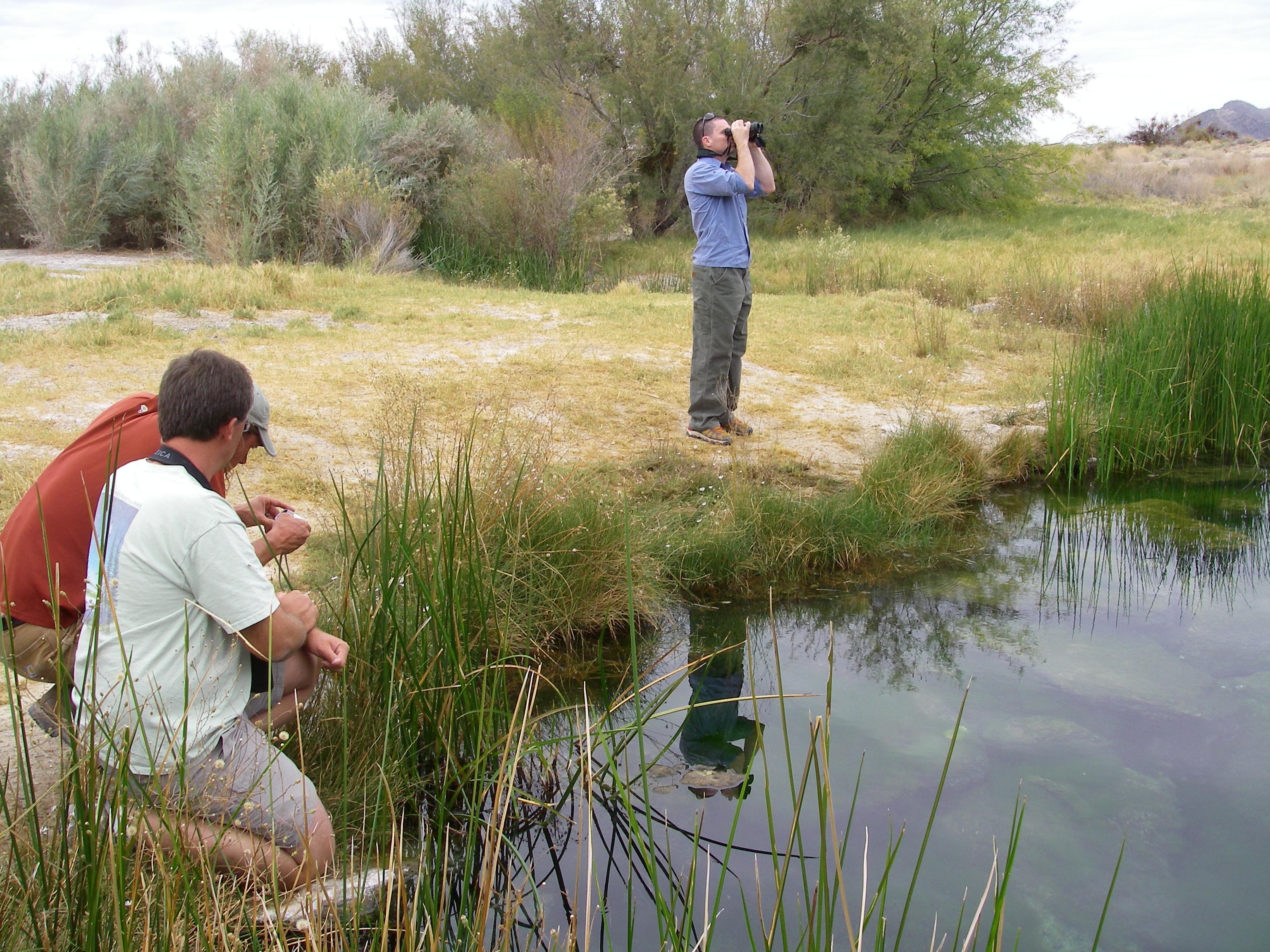Ash Meadows Springs Restoration Environmental Assessment
Ash Meadows Springs Restoration Environmental Assessment

 Ash Meadows National Wildlife Refuge is a unit of the Desert National Wildlife Refuge Complex (the Refuge). The Refuge encompasses more than 23,000 acres and provides habitat for at least 27 plant and animal species found nowhere else in the world. This distinguishes Ash Meadows as having the greatest concentration of endemic species of any area in the United States. Both a recovery plan and conservation plan have been developed to aid in the recovery of listed species and their habitats. Seven species are listed as threatened or endangered under the Endangered Species Act of 1973 are in the project area. These species include the Ash Meadows Amargosa pupfish (Cyprinodon nevadensis mionectes) , southwestern willow flycatcher (Empidonax traillii extimus), Ash Meadows speckled dace (Rhinichthys osculus nevadensis), Devils Hole pupfish (Cyprinodon diabolis), spring-loving centaury (Centaurium namophilum), Yuma clapper rail (Rallus longirostris yumanensis), and Amargosa niterwort (Nitrophila mohavensis). BIO-WEST provided an Environmental Assessment for the Refuge. The assessment detailed the environmental consequences for air quality, threatened and endangered species and their critical habitat, cultural and historic resources, recreation, invasive and nonnative plants and animals, wetlands, and migratory birds if certain action options were implemented. BIO-WEST outlined the benefits of aquatic habitat enhancement and restoration projects including road modification and stream crossing construction, impoundment and ditch removal, fish barrier design and construction, native fish and snail salvage, and Ash Meadows speckled dace reintroduction.
Ash Meadows National Wildlife Refuge is a unit of the Desert National Wildlife Refuge Complex (the Refuge). The Refuge encompasses more than 23,000 acres and provides habitat for at least 27 plant and animal species found nowhere else in the world. This distinguishes Ash Meadows as having the greatest concentration of endemic species of any area in the United States. Both a recovery plan and conservation plan have been developed to aid in the recovery of listed species and their habitats. Seven species are listed as threatened or endangered under the Endangered Species Act of 1973 are in the project area. These species include the Ash Meadows Amargosa pupfish (Cyprinodon nevadensis mionectes) , southwestern willow flycatcher (Empidonax traillii extimus), Ash Meadows speckled dace (Rhinichthys osculus nevadensis), Devils Hole pupfish (Cyprinodon diabolis), spring-loving centaury (Centaurium namophilum), Yuma clapper rail (Rallus longirostris yumanensis), and Amargosa niterwort (Nitrophila mohavensis). BIO-WEST provided an Environmental Assessment for the Refuge. The assessment detailed the environmental consequences for air quality, threatened and endangered species and their critical habitat, cultural and historic resources, recreation, invasive and nonnative plants and animals, wetlands, and migratory birds if certain action options were implemented. BIO-WEST outlined the benefits of aquatic habitat enhancement and restoration projects including road modification and stream crossing construction, impoundment and ditch removal, fish barrier design and construction, native fish and snail salvage, and Ash Meadows speckled dace reintroduction.

